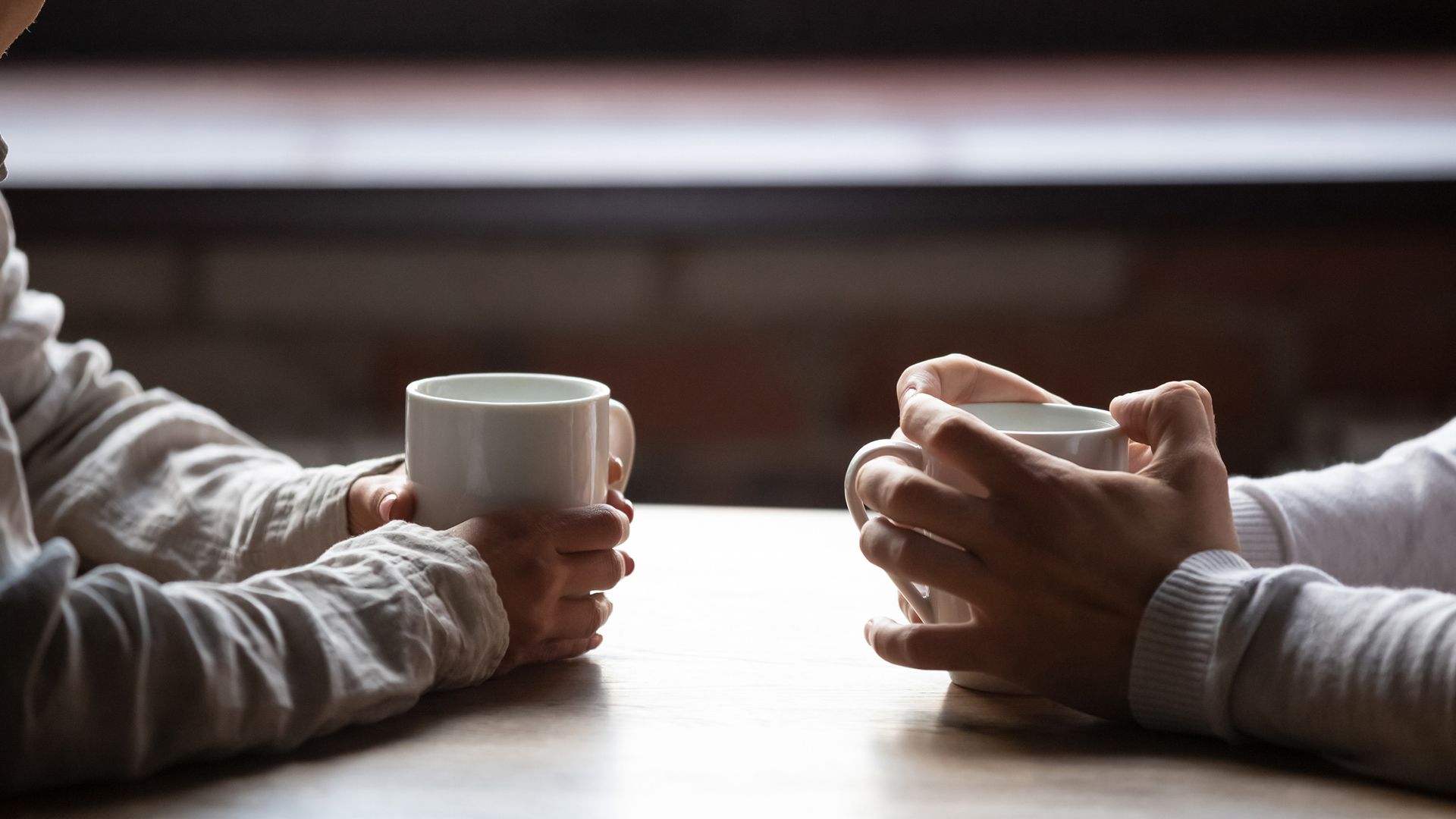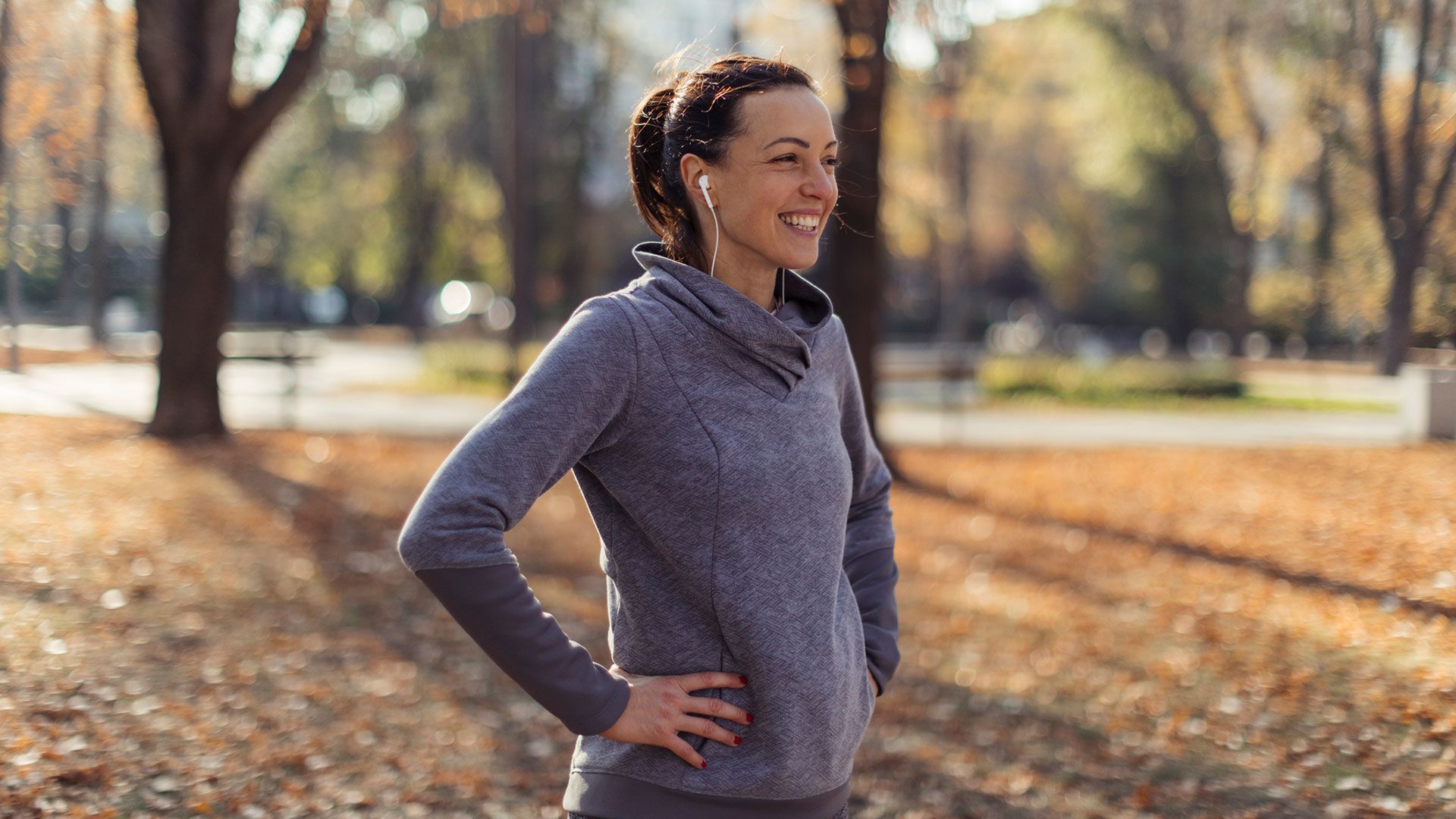Updated on May 7, 2024
Of all of our human capacities, curiosity is at the top of my list of most essential. From helping us learn to survive in the world to bringing the joy of discovery and wonder, curiosity really is a superpower.
Among its many benefits, curiosity can help us understand and ultimately defuse some of our most stubborn habit loops.
Habit loops defined
What is a habit loop? In short, it’s the reinforcing interplay between a behavior you often do and the reward you get from doing it.
Our cave-dwelling ancestors developed some basic habit loops to help them survive:
- Trigger: See food.
- Behavior: Eat food.
- Reward: Survive and feel good.
- Repeat
While many habit loops are essential to our well-being, others revolve around negative experiences. Take anxiety, for example. If you experience anxiety, you might try to avoid the unpleasant feelings associated with it by reaching for your favorite comfort food. In this way, eating becomes reinforced as a way to distract yourself from your anxiety.
- Trigger: Anxiety
- Behavior: Eating
- Reward: A few minutes of distraction from feeling anxious
Since food is not a real remedy for anxiety, this sort of habit loop never really solves the underlying problem and possibly adds negative emotions to it (such as guilt about overindulging).
Getting curious
Thankfully, with a little practice, you can begin to unwind your habit loops. The following exercise works as a kind of “panic button” for when anxiety hits. It will take about 2 minutes.
First, find a quiet, comfortable place. You can be sitting, lying down, or even standing up. You just need to be able to concentrate without being distracted.
Recall your most recent run-in or “incident” with a habit loop.
Now, see if you can remember the scene and relive that experience, focusing on what you felt right at the time when you were about to act out the habitual behavior, such as eating to soothe your anxiety. What did that urge to go ahead and “do it” feel like?
Now check in with your body.
What sensation can you feel most strongly right now? Here’s a list of single words or phrases to choose from. Pick only one, the one you feel most strongly:
- Tightness
- Pressure
- Contraction
- Restlessness
- Shallow breath
- Burning
- Tension
- Clenching
- Heat
- Pit in stomach
- Buzzing/vibration
Is the sensation more on the right side or the left? In the front, middle or back of your body? Where do you feel it most strongly?
When you look at the body with curiosity in this way, you can help identify where your stress is held. Eventually, these sensations can even lose their negative attributes.
Now, let out your inner “hmm.” (This is the sound we naturally make when we’re curious about something.) Is that “hmm” on the right side or the left? In the middle, front or back of your body?
Don’t worry about what area you picked. They are all perfect.
Was there anything you noticed about being curious about what part of your body you felt the sensation in? Did being a little curious help with getting closer to this sensation?
Exploring other sensations
If the sensation is still there, see if you can get curious and notice what else is there.
Are there other sensations you’re feeling? What happens when you get curious about them? Do they change? What happens when you get really curious about what they feel like?
Follow them over the next thirty seconds, not trying to do anything to or about them, but simply observing them. Do they change at all when you observe them with an attitude of curiosity?
This short exercise is meant to give you a taste of curiosity—to support your natural capacity to be aware and even curious about what is happening in your body and mind right now. If you noticed that by being curious you just gained even a microsecond of being able to be with your thoughts, emotions, and body sensations more than you have in the past, you’ve just taken a huge step forward.
The goal is to help you step out of your old habit loops and into the present moment. When you use “hmm” as a mantra, you bring out your childlike fascination, especially if you haven’t used it in a while. “Hmm” helps you drop right into your direct experience, instead of getting stuck in your head trying to do something about those pesky habit loops or to fix yourself.
Whenever an urge to do a habitual behavior comes up—or even while you’re in the middle of the behavior—see if you can tap into this attitude of curiosity so that you can open up to the experience and learn from it.
Adapted from UNWINDING ANXIETY by arrangement with Avery Books, a member of Penguin Group (USA) LLC, A Penguin Random House Company. Copyright © 2021, Dr. Judson Brewer.
Jud Brewer, MD, PhD, is director of research and innovation at Brown University’s Mindfulness Center. If you need a hand finding your breath or developing a meditation routine, visit DrJud.com for more resources. For an immersive evidence-based mindfulness experience, sign up for the Unwinding program or purchase a copy of the book Unwinding Anxiety.





